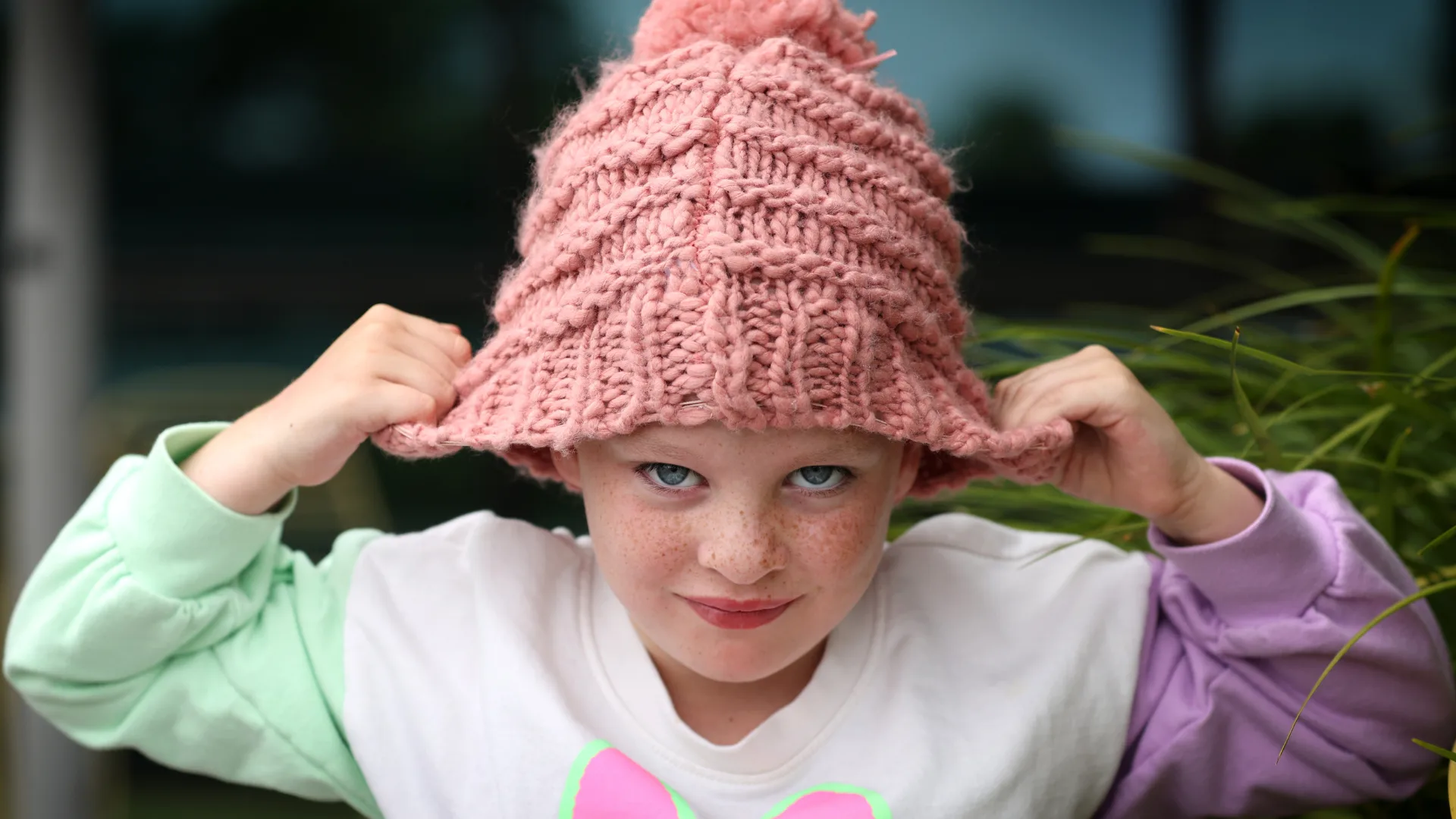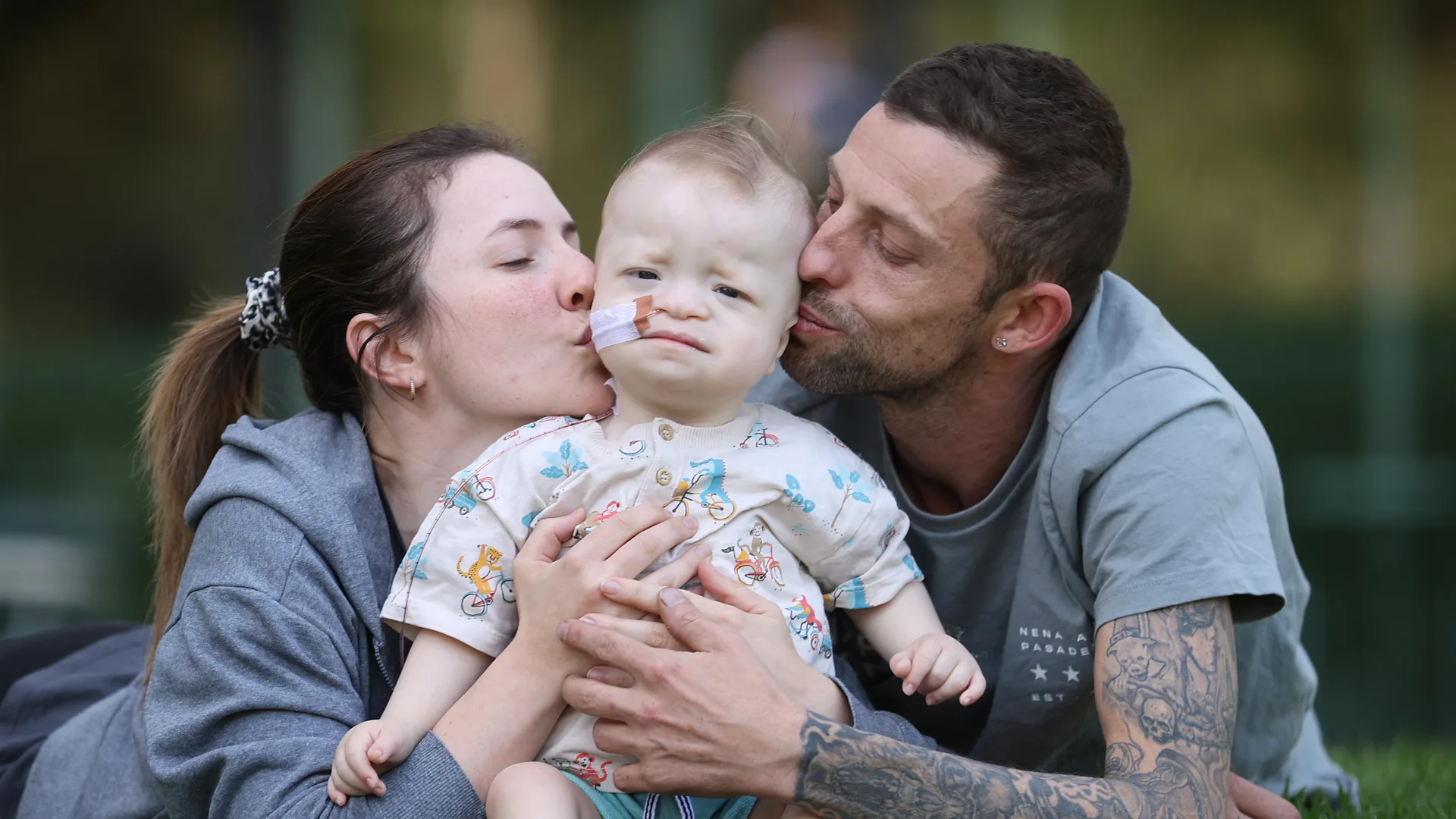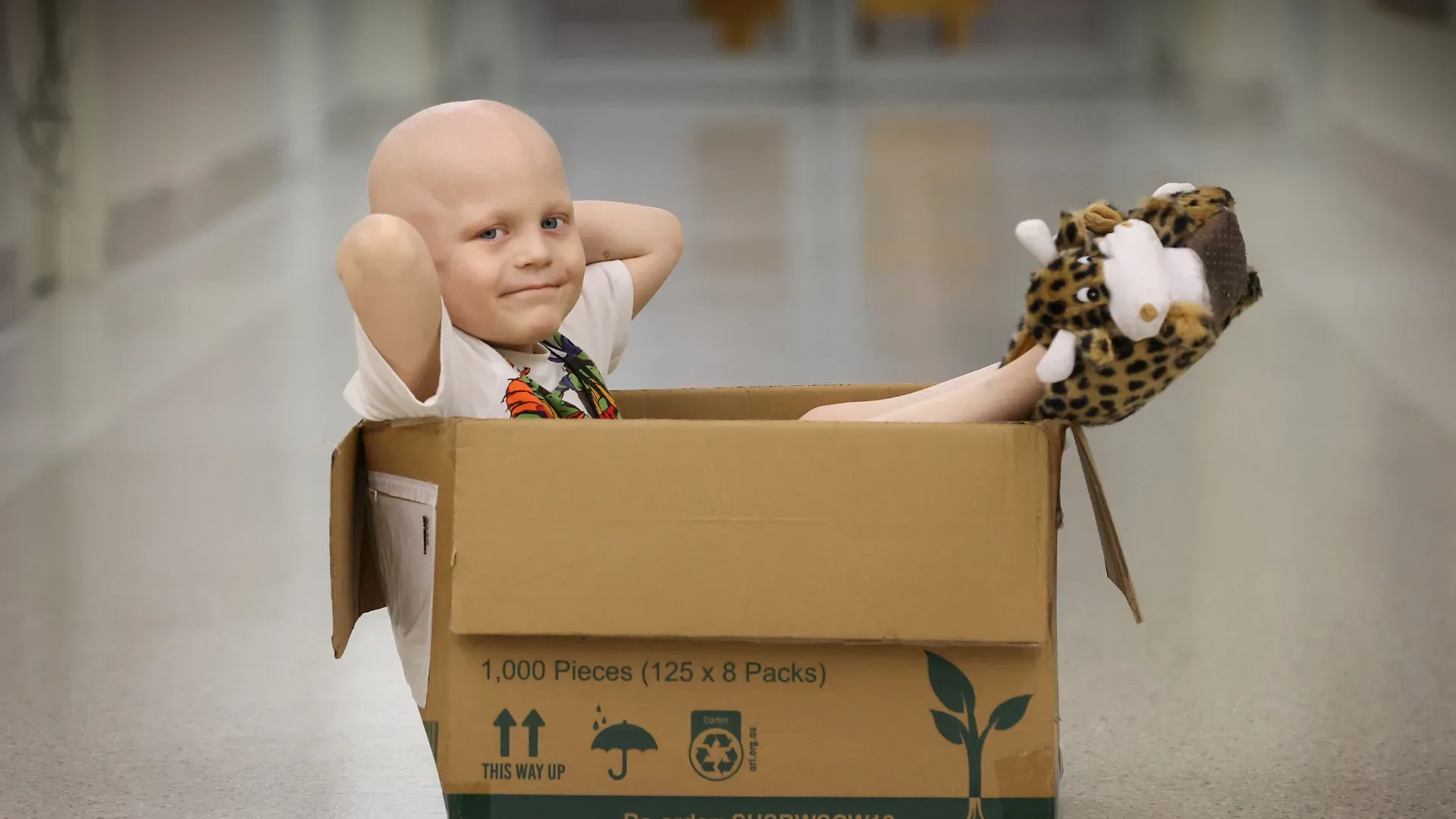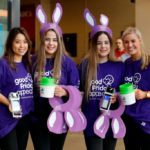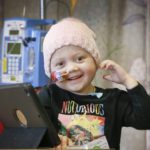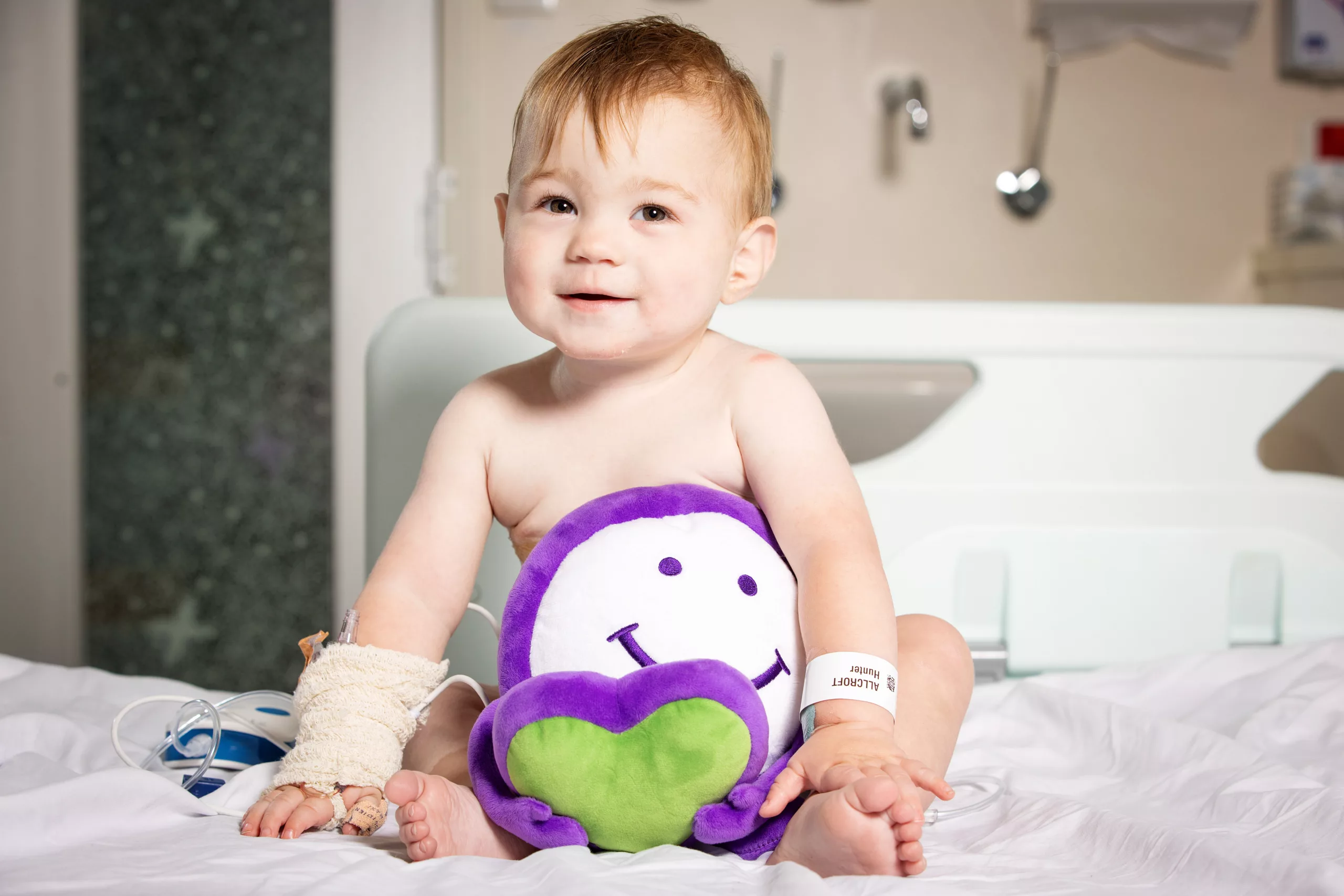
Hunter the Miracle Toddler
The odds were against Hunter even before he was born, but despite arriving with three organs outside his body the plucky toddler is on top of the world
A “miracle” toddler plays in the sand beside the Murray River, a red line on his stomach the only sign of his fight to be there.
To the passer-by who paused to let the laughing boy pet his dog, Hunter could have been any ordinary child enjoying the fresh air with his family.
The truth is, without his parents Lisa and Marty Allcroft and the Royal Children’s Hospital, this bubbly, energetic toddler may have never taken his first breath.
This is the story of two determined parents, a dedicated team and a brave boy, born with his organs outside his body.
The happy pregnancy that all families crave was abruptly shattered at Lisa’s 12-week scan when her sonographer discovered what they later learnt was Hunter’s exomphalos. The rare condition occurs when there is a defect in a foetus’ abdominal wall and some of their organs develop outside of their body in the umbilical cord.
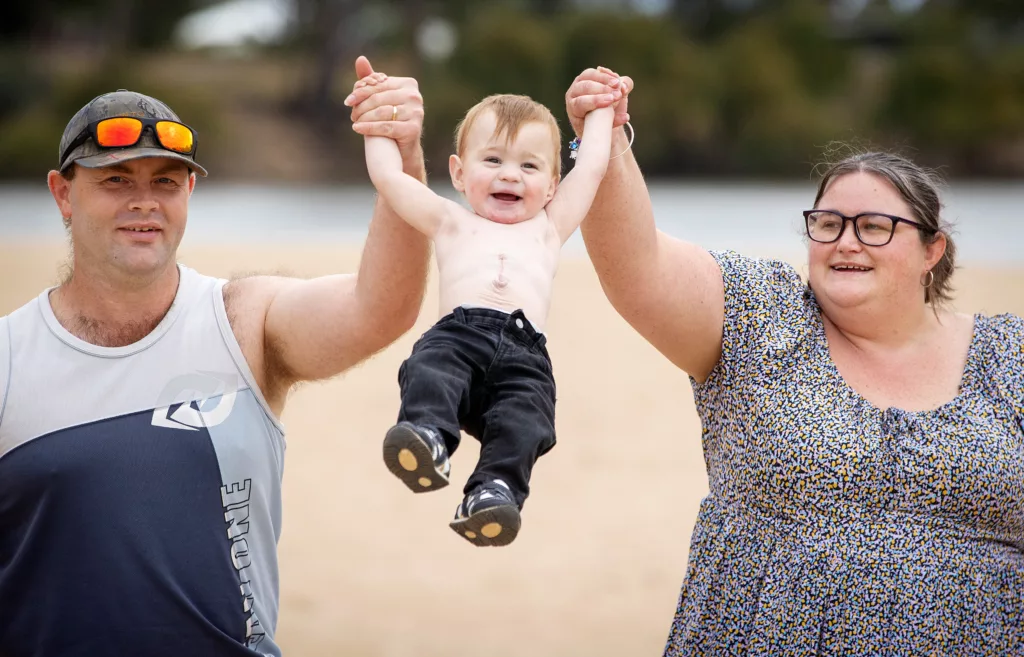
Lisa said the future was so uncertain, they kept the pregnancy a secret from most people, finding themselves unable to answer their well-intentioned questions.
“It was just too hard. Everyone was just telling us to abort,” she said.
The Cobram couple was sent to Melbourne for specialised care, where they begged doctors to let them talk directly to a paediatrician who had treated exomphalos.
That call – with a Royal Children’s Hospital specialist – was their first moment of hope in a long time.
They could not promise Hunter did not have other conditions but said an exomphalos could be treated and children “live a happy, healthy life afterwards”.
Hunter came into this world via caesarean at the Royal Women’s Hospital on February 7, 2021. The sac outside his body held his bowel, liver, gallbladder and some of his stomach.
Hunter and his ‘bump’ of organs, carefully wrapped in cling film, was transferred to the Royal Children’s Hospital and the care of paediatric surgery department director Dr Michael Nightingale.
Dr Nightingale said Hunter’s exomphalos was so big that it was too dangerous to operate.
“If we had pushed all (those organs) back in, then he wouldn’t have been able to breathe afterwards,” he said.
What followed was a months long-journey of carefully wrapping Hunter’s exomphalos so the organs stayed above the opening, allowing gravity to slowly pull them into their rightful place. But with the sac made of a thin, clear membrane, the family had to spend weeks in hospital amid strict Covid restrictions.

Lisa said some days it felt like they would never get to leave.
“When you’re waiting for skin to grow, it takes a long time,” she said.
But after seven weeks, home was in sight.
Hunter, fed via a feeding tube but otherwise doing well by this stage, only remained in hospital for his weekly dressing change.
Goulburn Valley Health’s Shepparton hospital had never treated a child with exomphalos, so Dr Nightingale said the RCH spoke to a “fantastic” nurse – Paula Holland – who responded “show us what to do and we’ll take it on”.
Soon Hunter was in the hands of his regional hospital, which oversaw the weekly changes for months.
Lisa said it allowed him to meet his grandparents, go outside to “feel the breeze on his face” for the first time and – a week after arriving at Shepparton – finally go home.
After 14 months of waiting, the surgery that changed Hunter’s life took just a few hours.
Hunter was determined to fight off the sedative, squealing every few seconds to wake himself up.
He’d been blissfully unaware of what was to come; playing peek-a-boo with a friendly anaesthetist, and only crying when an apologetic nurse checked his vitals, his small fingers grasping onto mum for comfort. At age 1, it was his parents who had to carry the burden of knowing what lay ahead as Hunter drifted off to sleep.
A nurse ran the team through a checklist as surgeons Dr Nightingale and Benjamin O’Sullivan scanned the exomphalos, circled with a purple marker.
Dr Nightingale said they usually waited until the child was older, but Hunter’s “bump” had shrunk so much, only a portion of his liver remained inside. Shortly after, the surgery began.
Dr Nightingale said the operation would be “relatively straightforward” but the main challenge was navigating a vital vein that runs from the liver to the heart.
The team carefully separated Hunter’s liver from his sac and put it back where it belonged, pulling the abdominal wall together to keep it that way. After a few hours, they made their final stitches on Hunter’s now flat stomach, using part of the exomphalos to form a belly button at the end of his scar.
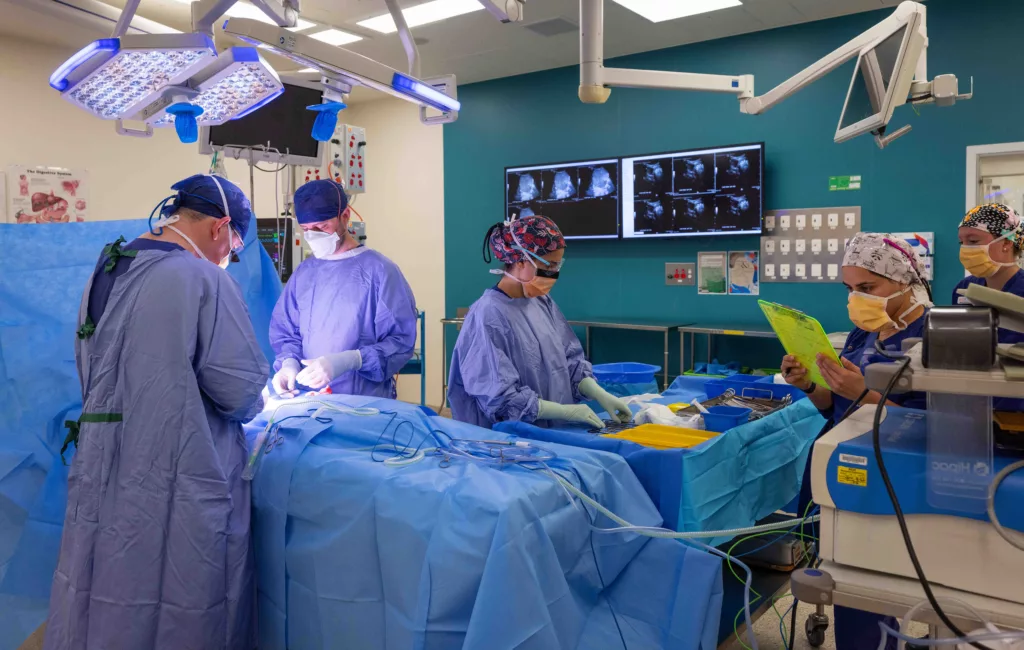
He was wheeled into post-operative care where a nurse taped a certificate for “bravery and courage” to his cot and called his parents once the toddler had begun to stir.
Marty said he’d never realised how slow a clock goes, until he found himself watching one that day.
Back home in Cobram less than two weeks later, he looks down at his son with pride.
“He’s always been happy, even when he had the worst against him,” he says. “He’s definitely a miracle.”
Lisa said they were lucky to have such a resilient kid and that the hospital was a lifeline for rural towns.
“It doesn’t matter what gets thrown at him, he seems to knock it out of the way,” she said. “Without the Royal Children’s Hospital, I don’t really know where we’d be.”
After so much uncertainty, the family have their eyes on the future, on days filled with laughter and loved ones. The kind of days – so ordinary they would never make the pages of a newspaper – that families living out of suitcases in hospital dream about.
Written By Sarah Booth
Pictures by Mark Stewart
Published: Herald Sun 07/04/2023

